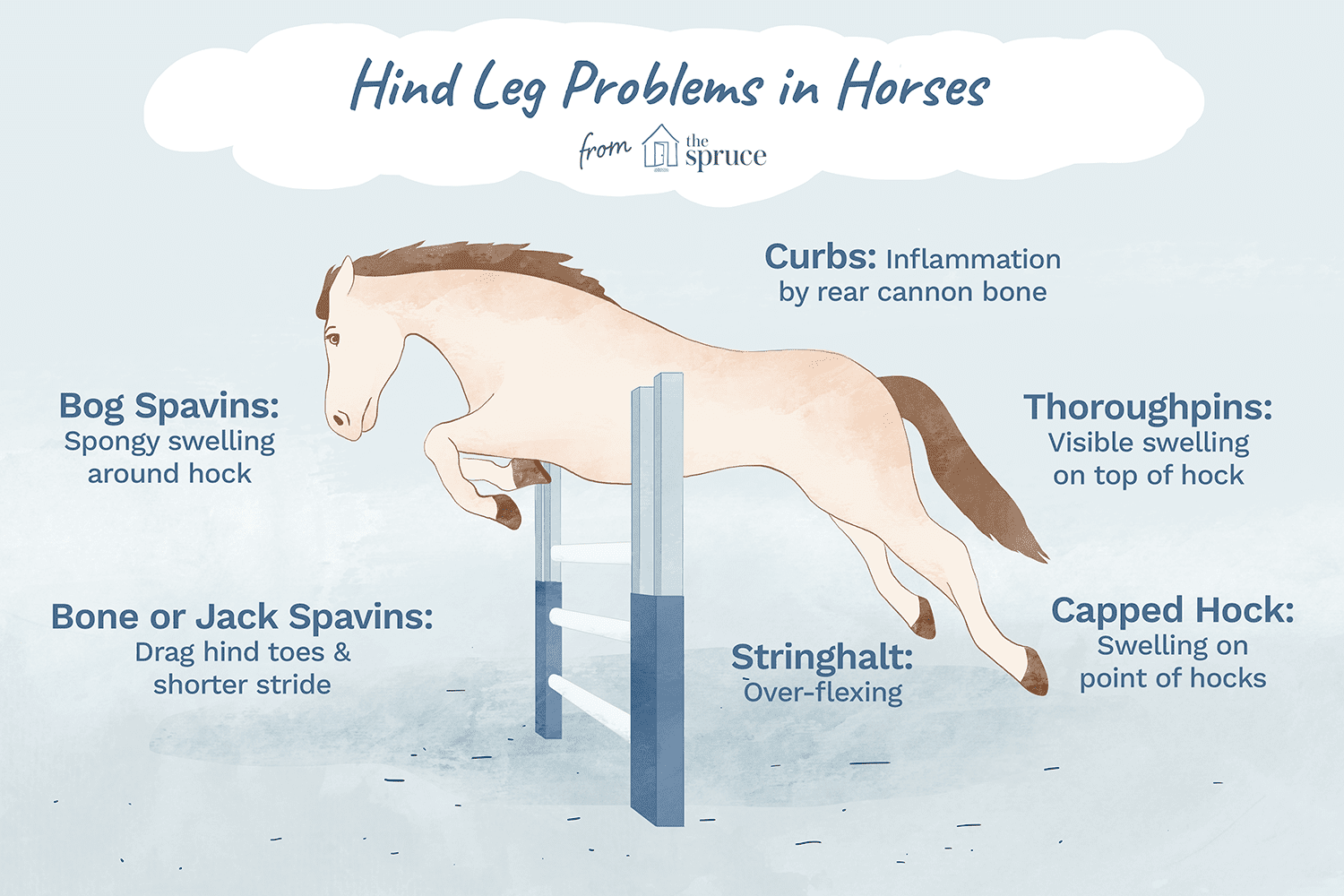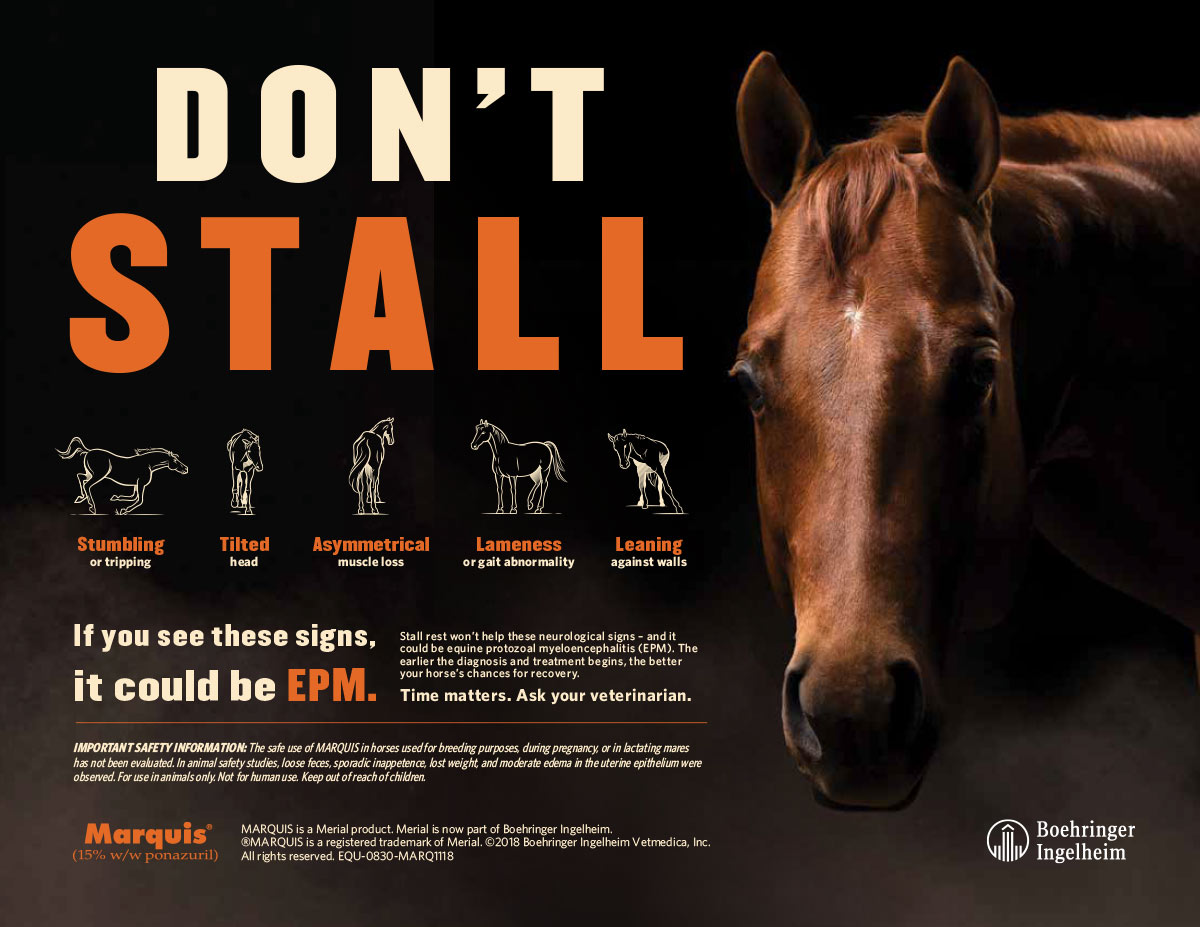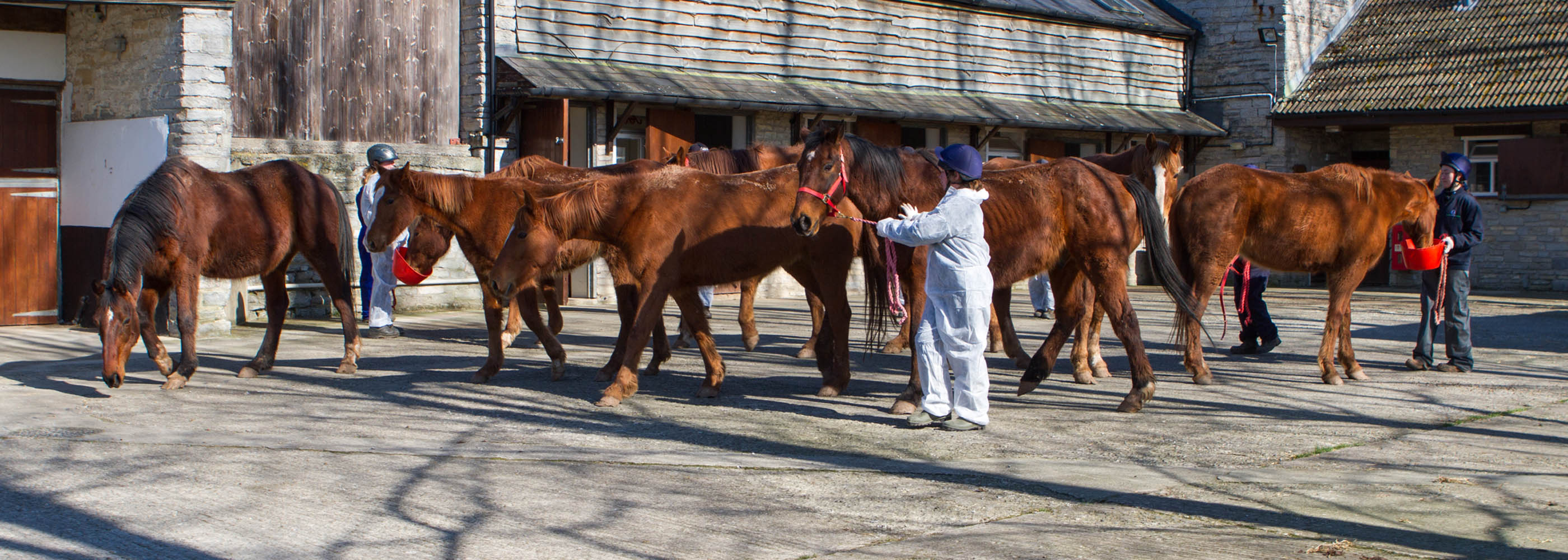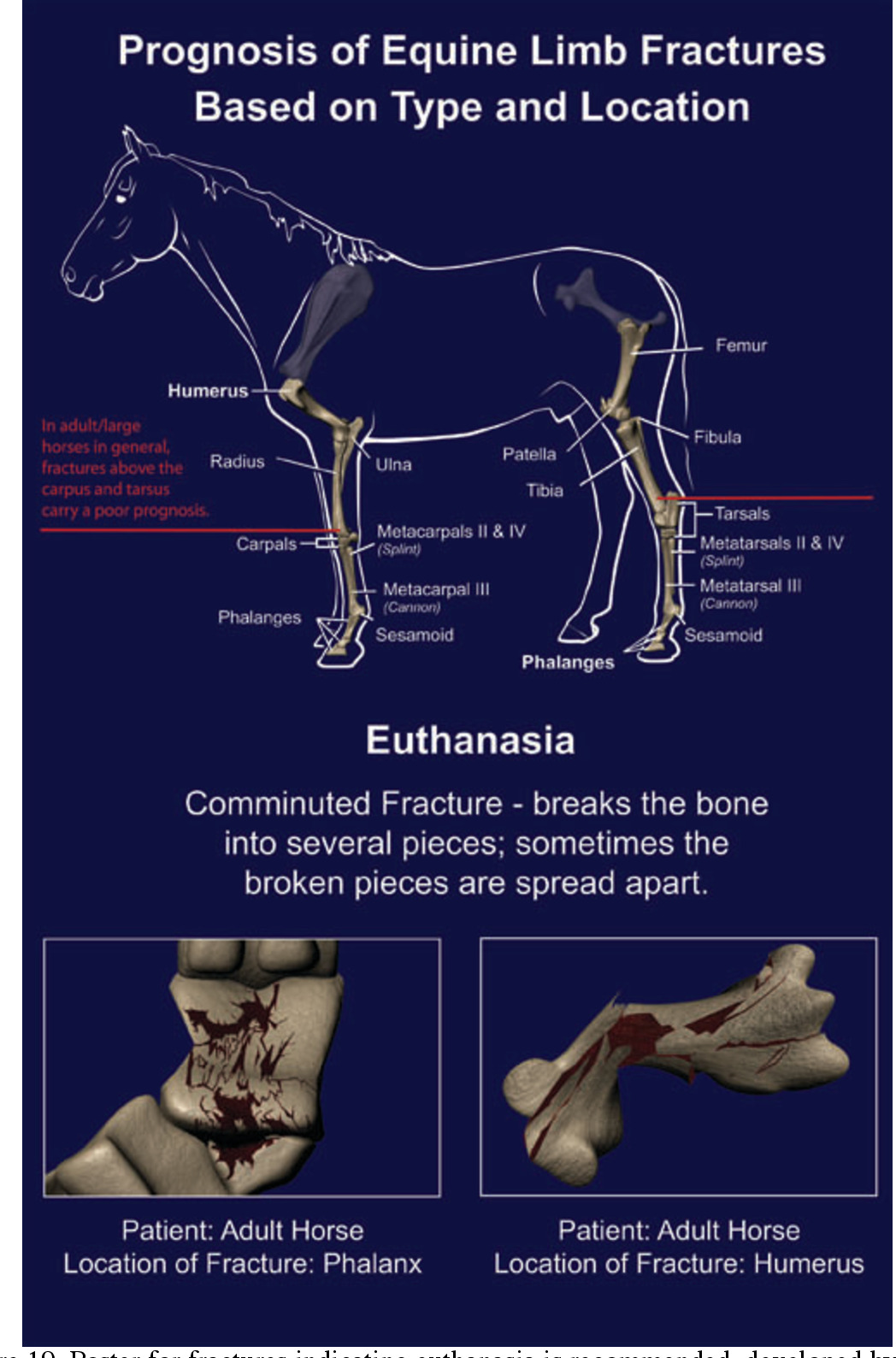When observing equine behavior, certain actions can signal a need for closer attention. One such behavior is a horse lifting its hind leg high when walking. This peculiar movement can be a cause for concern among horse owners and caretakers, as it often indicates an underlying issue that requires attention. Understanding the complexities behind this behavior is crucial to ensure the well-being of these majestic animals.
Experiencing a horse lifting its hind leg excessively — known as “stringhalt” — can be startling. This condition involves an involuntary snapping up of one or both hind limbs, particularly noticeable at a walk. The range of reasons for leg lifting in horses is varied, from neurological disorders to physical injuries. Here, we delve into the reasons, signs, and treatments of this equine anomaly.
Insight into Equine Leg Lifting Behavior

When a horse habitually lifts its hind leg in an exaggerated fashion while walking, it can be an indication of potential health issues that need prompt investigation. Delving into the reasons behind this leg lifting behavior is essential for the proper care and treatment of affected horses.
Uncovering Hidden Health Challenges
Hidden health challenges such as internal infections or metabolic imbalances might influence a horse’s gait, resulting in abnormal hind leg lifting. Furthermore, previous injuries that have not healed correctly can lead to unusual compensatory movements. Diligent observation is crucial for recognizing these subtle indications of discomfort or pain.
Assessing Equine Structure and Movement
The structure of a horse’s body, including limb length and joint angles, can affect its gait and lead to higher leg lifting. Professionals may need to evaluate these horses to manage or rectify such anomalies, ensuring their well-being and mobility.
- Osteochondritis Dissecans: This joint condition can cause pain and influence how a horse moves.
- Spine Health: An uneven spine can affect a horse’s leg movements.
Evaluating Neurological Health
Neurological disorders can disrupt a horse’s normal perception and control of limb movement, potentially causing exaggerated leg lifting. Early identification and treatment of these conditions are vital for the horse’s ongoing health and functional movement.
- Central Nervous System Conditions: Diseases like EPM can disrupt normal movement patterns.
- Viral Infections: Illnesses such as West Nile Virus can cause neurological signs that affect gait.
Addressing Discomfort and Pain
Excessive leg lifting can often be traced back to pain or discomfort. A detailed examination by a veterinarian is necessary to locate the source of pain. Innovative diagnostic tools might be utilized to uncover issues that a basic physical exam cannot detect.
Environmental and Behavioral Factors
Training practices and environmental conditions can significantly impact a horse’s gait. Issues arising from improper training or unsuitable tack may manifest as abnormal leg lifting. Regular evaluations by an equine professional can help to amend these practices, fostering healthier movement patterns.
Maintaining Equine Mobility and Comfort

Comprehending the nuances of horse leg lifting behavior is vital for preserving their health and functionality. A holistic view encompassing physical, environmental, and behavioral aspects is necessary for addressing equine lameness. Proactive care and early intervention are paramount for ensuring horses enjoy a comfortable and healthy life. Horse owners and caretakers must be attentive and responsive in their management strategies to prevent and resolve these mobility issues.
Identifying Potential Causes of Altered Equine Gait

For those responsible for equine care, distinguishing playful or transient leg movements from persistent abnormal locomotion is crucial. Regularly lifting a leg higher than normal can signal health issues that might affect a horse’s movement quality and overall comfort. Caretakers must be keen observers to recognize and address such health-related gait abnormalities early on.
Genetic and Conformational Factors Affecting Horse Gait
Certain horse breeds are genetically more susceptible to gait anomalies due to inherited traits. Disorders like fibrotic myopathy, more common in some draft breeds, can impact how a horse walks. Genetic screening and responsible breeding are keys to mitigating these hereditary risks.
Role of Diet in Equine Muscle and Bone Health
Nutritional imbalances can weaken equine musculature and skeletal integrity, subsequently altering a horse’s gait. A balanced diet with sufficient electrolytes, vitamins, and minerals is critical to prevent issues such as muscle cramps that can lead to atypical leg lifting.
Endocrine Disorders and Their Impact on Movement
Endocrine conditions like Cushing’s disease or insulin resistance can indirectly influence equine locomotion, potentially causing a horse to alter its leg-lifting pattern to compensate for muscle weakness or discomfort.
Influence of External Environmental Factors
External influences, including the care a horse receives, can affect its gait. For example, incorrect shoeing or riding surfaces that are either too yielding or too firm can necessitate adjustments in a horse’s walking pattern to alleviate limb stress or discomfort.
Residual Effects of Injuries on Gait
Previous accidents can result in lasting movement impacts. Persistent pain or mechanical hindrances from former injuries might necessitate a higher leg lift as the horse tries to manage discomfort or a restricted range of movement.
Behavioral and Training Influences
The approach to training can significantly shape a horse’s walking patterns. Training that is not suited to the horse’s needs or inappropriate equipment can create physical or psychological stress, potentially leading to gait irregularities.
Neurological Impact of Toxins
Toxins in the environment or feed can adversely affect a horse’s nervous and muscular systems. Exposure to harmful substances like heavy metals may result in neurological symptoms that include unusual leg lifting.
Proactive monitoring and management of these varied factors are integral for preventing and addressing atypical leg movements. Such vigilance helps in safeguarding the mobility and general health of horses under human care.
Understanding Equine Well-being Indicators

As primary caregivers, understanding when a horse may be suffering from pain or distress is essential for their health and management. Being able to spot these signs promptly can greatly improve the chances of providing effective and timely interventions. Horses naturally hide their pain, which is why it’s important to be vigilant and recognize the less obvious signals indicating that a horse may be uncomfortable or in need of care.
Subtle Behavioral Signals of Equine Distress
Changes in a horse’s demeanor can be telling. For instance, a horse that suddenly becomes irritable or seems unusually tired may be trying to tell us they are not feeling well. These behavioral shifts, including differences in social engagement or appetite, are critical early indicators of potential health problems. It’s important to watch for these changes in routine behaviors as they may provide the first notice of distress.
- Change in Social Dynamics: A horse distancing itself from its companions could be a sign of discomfort.
- Eating Behavior Variations: Any significant changes in how a horse eats could suggest health concerns.
- Abnormal Resting Patterns: If a horse’s sleep habits alter, this may reflect an attempt to cope with discomfort.
Subtle Physical Signs of Health Issues
Physical symptoms can be diverse and range in their visibility. A lackluster coat, for instance, may point to various health conditions from nutritional shortages to parasite infestations. Weight fluctuations, whether loss or gain, can be symptoms of metabolic or other systemic issues. Additionally, signs like unusual breathing sounds or nasal discharge are noteworthy and could indicate a need for veterinary evaluation.
- Lackluster Coat: This may signal stress or underlying health issues.
- Unexpected Weight Variations: Any inexplicable changes in weight should be investigated.
- Breathing Irregularities: Ongoing coughs or nasal discharge can be symptoms of respiratory conditions.
Interpreting Equine Facial Cues
Recent studies have shown that a horse’s facial expressions can be a reliable indicator of their internal state. Specific facial movements can suggest pain or unease. Recognizing tension around their eyes or changes in their nostril and lip movements can give insight into a horse’s feelings. Knowing a horse’s typical relaxed facial expressions provides a baseline for identifying any concerning changes.
Heeding Equine Vocal Expressions
The sounds a horse produces can provide clues to their well-being. For example, uncommon vocalizations like groaning or excessive neighing may be signs of distress. Conversely, the absence of normal sounds can be just as revealing. Paying close attention to these auditory signals is essential for a comprehensive assessment of a horse’s condition.
Noticing Changes in Equine Posture
A horse might alter its posture to lessen pain or discomfort. Postures such as an arched back or shifting weight between hooves can suggest an attempt to relieve pain. Observing these postural adjustments is important, as they can indicate various ailments from problems with the hooves to muscular issues. Also, an increase in lying down and standing up could be a horse’s effort to find a comfortable position.
By maintaining a watchful eye and a thorough understanding of horse behaviors and postures, caregivers can pick up on the often-subtle signs of discomfort in horses. Early recognition is crucial for providing the necessary care to maintain the health and comfort of these dignified creatures.
Strategies for Addressing Equine Hind Limb Concerns

Equine health professionals possess expertise in identifying and addressing hind limb complications in horses, which is vital for their overall health and athletic capacity. The initial step is gathering a detailed history from the owner, including any recent changes in activity, diet, or behavior. A thorough physical examination by the veterinarian involves evaluating the horse both at rest and in motion, focusing on symmetry, muscle condition, and any signs of inflammation or injury such as swelling or heat. Palpation of the hind limbs and joints can offer additional insights into potential causes of gait disturbances.
Innovative Diagnostic Methods
To accurately diagnose hind limb conditions, veterinarians may use state-of-the-art diagnostic tools that provide a clearer picture of the underlying issues. Such methods include:
- Radiography (X-rays): Essential for detecting skeletal issues.
- Ultrasound Imaging: Useful for examining soft tissue integrity.
- Nuclear Scintigraphy (Bone Scan): Highlights areas with increased metabolic activity that may signify injury.
- Magnetic Resonance Imaging (MRI): Provides comprehensive views of both bone and soft tissue.
Assessing fluid samples from blood, urine, or synovial fluid can offer valuable information when identifying systemic diseases or infections that impact limb function.
Identifying Symptoms of Hind Limb Conditions
A range of disorders could be responsible for a horse lifting its hind leg abnormally, with each presenting specific symptoms:
- Stringhalt: Characterized by the abrupt lifting of the hind leg.
- Patellar Fixation: Involves the stifle joint becoming locked during movement.
Different disorders require distinct diagnostic and treatment strategies.
Treatment Plans and Recovery Outlook
Following a diagnosis, the veterinarian will develop a treatment regimen aimed at symptom relief, addressing the root cause, and aiding the horse’s recovery. Treatment options may encompass:
- Medicinal Therapies: Including medications to reduce inflammation and muscle spasms.
- Surgical Interventions: Performed to amend anatomical defects or decompress affected nerves.
- Rehabilitative Exercises: Focused on improving flexibility and muscle strength.
- Complementary Therapies: Such as acupuncture or chiropractic adjustments.
The outlook for recovery depends on the specific condition, but with early and suitable management, many horses can regain their former levels of activity.
Long-Term Management Strategies
After diagnosis, the emphasis is on managing the horse’s condition to avoid reoccurrence. This may necessitate adjustments in exercise routines, modifications to the horse’s living environment to minimize stress on the hind limbs, and regular check-ups to monitor for any negative changes. A collaborative approach to care, involving veterinarians, farriers, and rehabilitation specialists, is critical to formulate a comprehensive care plan that caters to the horse’s overall health needs.
These combined diagnostic, treatment, and management strategies create a solid foundation for resolving hind limb issues in horses, promoting their long-term health and athletic function.
Promoting Long-Term Health for Equine Legs

Optimizing the health of a horse’s legs involves a holistic approach that extends from immediate interventions to preventive measures and tailored rehabilitation. It’s vital to address unusual leg lifting behaviors early while also fostering an environment conducive to healing and future well-being. This encompasses consistent maintenance, exercise plans appropriate to the horse’s condition, and vigilant observation to prevent further issues. Such an approach can lead to effective management of leg health, facilitating both recovery and ongoing agility.
Proactive Responses to Abnormal Leg Movements
Observing atypical leg movements in horses necessitates immediate attention. Rest is critical to avoid exacerbating the issue, and applying cold therapy can help to lessen inflammation. In some cases, anti-inflammatory treatments are beneficial for reducing pain. These initial steps should always be complemented by a thorough evaluation from an equine specialist to determine the next steps for care.
Tailored Exercise and Nutrition for Recovery
- Customized Exercise Programs: These are essential to reinforce musculature and preserve joint function.
- Dietary Considerations: Ensuring a nutrient-rich diet is fundamental to bolster muscle and skeletal strength, which is crucial for leg health maintenance.
- Attentive Shoeing Practices: Appropriate shoeing can help redistribute weight across the limbs, potentially preventing gait issues.
- Consideration of Terrain: The type of ground a horse regularly traverses can have significant implications for leg health, making it important to select and maintain appropriate surfaces for walking and training.
Rehabilitative Approaches to Enhance Healing
Veterinarians often integrate advanced therapeutic techniques into a horse’s recovery plan, including:
- Aquatic Therapy: Water-based exercises can strengthen muscles with minimal impact.
- Physical Therapy: Tailored treatments that aim to return muscle and joint functionality to normal.
- Massage Treatments: To boost circulation and relaxation, contributing to the healing process.
- Ultrasound Therapy: This modality can help to alleviate discomfort and promote tissue recovery.
The selection of these techniques should be personalized to the horse’s specific needs and the leg health challenge being addressed.
Refining Daily Habits for Ongoing Leg Health
For the enduring health of equine legs, it’s important to adapt everyday practices to suit the horse’s individual needs. This can encompass:
- Modifying Workouts: Adjusting the intensity and frequency of exercise to prevent strain on recovering limbs.
- Environment Optimization: Changing living conditions to better support leg health, such as providing appropriate bedding to ease joint stress.
- Consistent Health Monitoring: Arranging regular check-ups with equine health experts to track progress and catch any setbacks in the horse’s recovery.
Implementing these strategies, in collaboration with equine health specialists, provides a comprehensive approach to maintaining and enhancing leg health. By addressing both treatment and prevention, caregivers can help ensure the long-term well-being and functionality of their equine companions.
Enhancing Equine Mobility and Preventing Walking Difficulties
Adopting a holistic approach to equine care is crucial for minimizing the risk of mobility issues and ensuring horses maintain a comfortable gait. It involves comprehensive strategies that encompass hoof care, balanced training, and environmental modifications. This section focuses on the key practices that can protect against walking difficulties, thus promoting the overall health and mobility of horses.
Proactive Veterinary Exams and Hoof Care
Routine health assessments by a veterinarian are vital for early detection of signs that may affect a horse’s walk. These regular evaluations, along with attentive hoof care, form the foundation of preventive leg health maintenance. Veterinarians play a crucial role in spotting early indications of wear or changes in movement that could hint at deeper health concerns.
Essential Hoof Maintenance
- Timely Trimming: Essential for preserving proper hoof alignment and avoiding imbalances that might affect gait.
- Shoeing Practices: Customized shoeing can provide necessary support and mitigate uneven hoof wear when indicated.
- Vigilance Against Hoof Pathologies: Early identification and treatment of hoof diseases are critical to maintaining leg health.
Adapting Training and Exercise Regimens
Appropriately tailored training and exercise programs are indispensable for preventing leg stress and preserving the horse’s agility and strength. Implementing a regimen that gradually escalates in intensity can help to condition the horse’s body and reduce the likelihood of injuries that could compromise their gait.
Training for Leg Health
- Incremental Training Intensification: Allows the horse’s body to adjust progressively, reducing the risk of stress-related injuries.
- Diverse Exercise Routines: Engaging in varied physical activities helps to enhance overall fitness while diminishing repetitive stress on the legs.
- Rest and Recovery: Ensuring horses have sufficient downtime is critical for muscle recuperation and preventing wear and tear.
Optimizing Stable and Pasture Environments
The living and training surroundings of a horse can have a profound impact on its leg health. Proper stable management and considerate pasture upkeep can aid in avoiding conditions that may result in walking difficulties, thereby contributing to the prevention of leg-related issues.
Enhancing Living Spaces for Leg Health
- Secure and Hygienic Stabling: A well-maintained stall can prevent injury and provide a comfortable area for rest and recovery.
- Pasture Maintenance: Regular upkeep of grazing areas can help eliminate potential risks such as uneven terrain that could cause leg injuries.
- Varied Training Surfaces: Exposing horses to different types of footing can strengthen leg resilience and help avert injuries due to concussive forces.
Supportive Nutrition for Leg Integrity
A balanced diet rich in essential nutrients is fundamental for maintaining the structural integrity of bones, tendons, and muscles. Customized nutritional plans, including necessary vitamins and minerals, play a significant role in sustaining robust leg health and averting mobility issues.
Dietary Components for Leg Maintenance
- Bone Health Nutrients: Adequate levels of calcium and phosphorus are imperative for bone strength and durability.
- Muscle Support Supplements: Antioxidants such as vitamin E and selenium are vital for muscle function and health.
- Protein Intake: High-quality proteins are essential for muscle development and repair.
Through diligent application of these care strategies, including consistent health evaluations, hoof care, and exercise routines, as well as attention to living conditions and diet, equine caretakers can significantly diminish the frequency of walking issues. These comprehensive efforts are key to preserving the graceful mobility and enduring leg health of horses.
If you’re curious about equine behavior and what it might signify, we have a range of articles that delve into these topics. For instance, you might be interested in why a horse holds its tail up when running, or what it could mean if a horse kicks when picking up back feet. Additionally, understanding the behavior behind when a horse stands on its hind legs can provide you with greater insight into your horse’s actions and emotions. Browse through our resources for a deeper understanding of these equine behaviors.
When to Seek Veterinary Assistance
Recognizing Serious Hind Leg High Step
If the horse’s high stepping is persistent or accompanied by other signs of distress, it’s crucial to consult a veterinarian. Early intervention can make a significant difference in the horse’s prognosis.
Emergency Situations and Immediate Actions
In the event of an emergency, such as a sudden onset of severe lameness or signs of neurologic impairment, immediate veterinary assistance is essential. Quick action can prevent further injury and improve the chances of a full recovery.
In conclusion, a horse lifting its hind leg high when walking is not a behavior to be overlooked. It’s a signal that something might be amiss with the horse’s health, and understanding the potential causes, signs, and treatments is key to ensuring the horse’s well-being. Regular monitoring, maintenance, and a proactive approach to equine care can help prevent such issues, but when they do arise, timely veterinary intervention is paramount.



